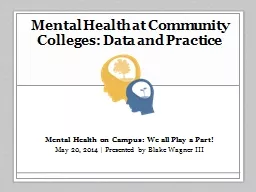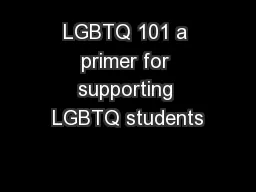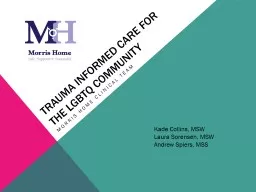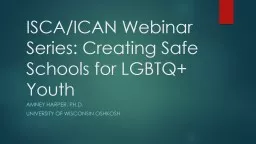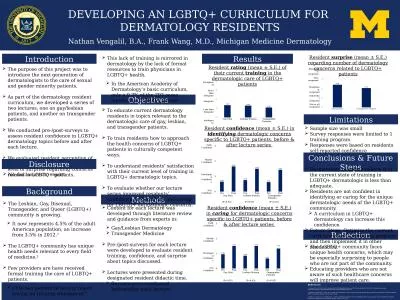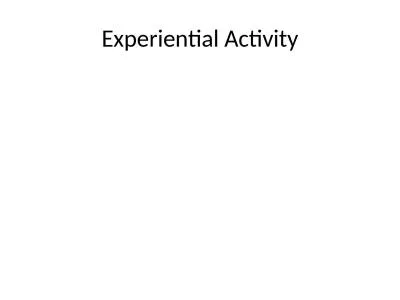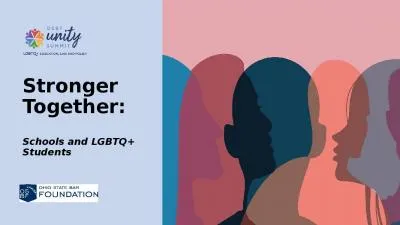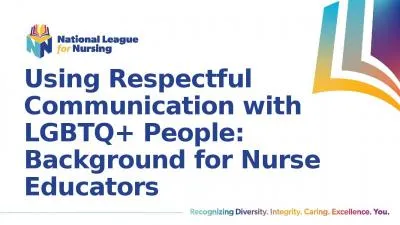PPT-Social Work Practice with the LGBTQ Community: The Intersection of History, Health, Mental
Author : StarsAndStripes | Published Date : 2022-08-04
Chapter 20 Understanding Health and Mental Health Factors Impacting the LGBTQ Community Authors sarah r young phd msw Marcie fisherborne phd msw mph
Presentation Embed Code
Download Presentation
Download Presentation The PPT/PDF document "Social Work Practice with the LGBTQ Comm..." is the property of its rightful owner. Permission is granted to download and print the materials on this website for personal, non-commercial use only, and to display it on your personal computer provided you do not modify the materials and that you retain all copyright notices contained in the materials. By downloading content from our website, you accept the terms of this agreement.
Social Work Practice with the LGBTQ Community: The Intersection of History, Health, Mental: Transcript
Download Rules Of Document
"Social Work Practice with the LGBTQ Community: The Intersection of History, Health, Mental"The content belongs to its owner. You may download and print it for personal use, without modification, and keep all copyright notices. By downloading, you agree to these terms.
Related Documents




